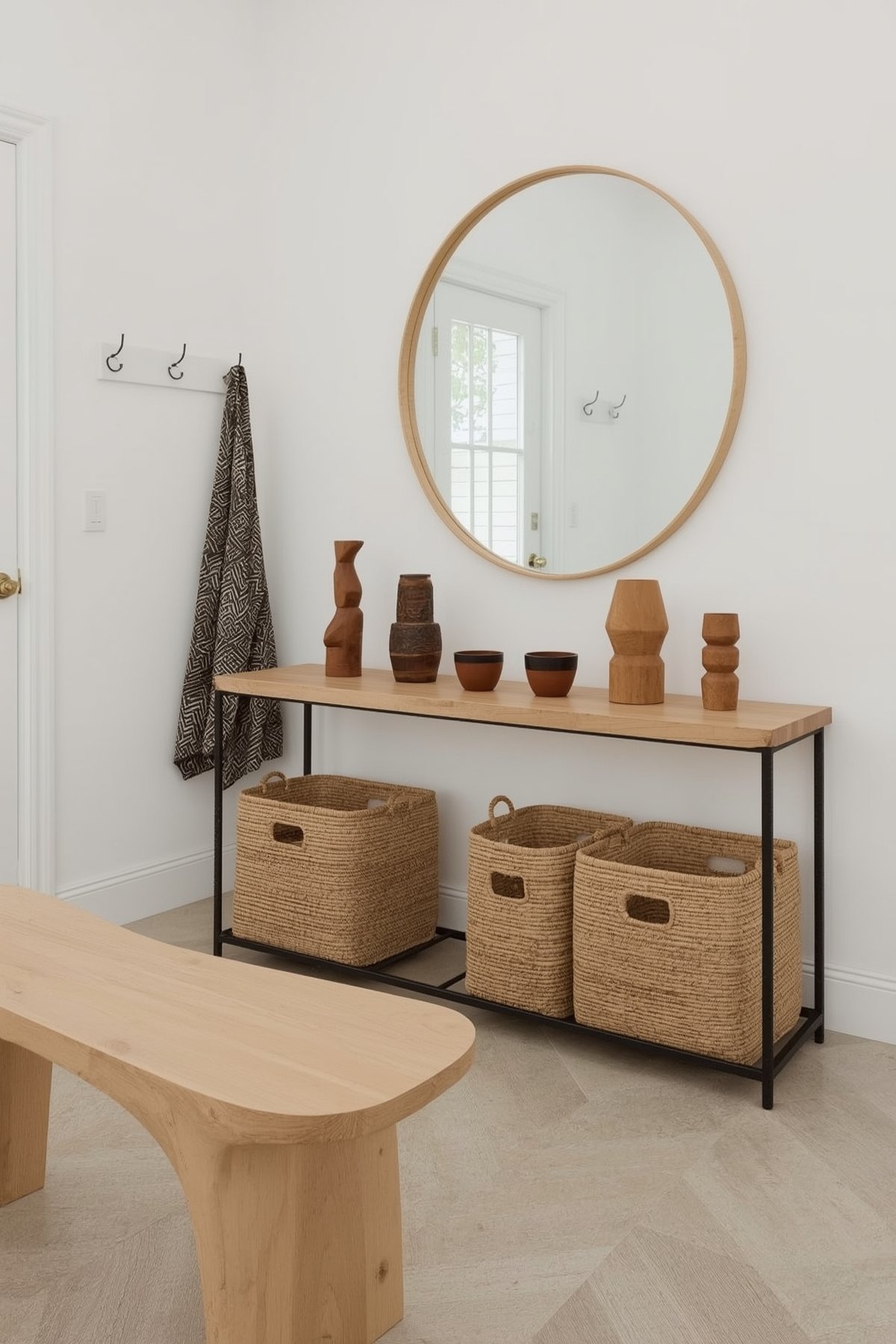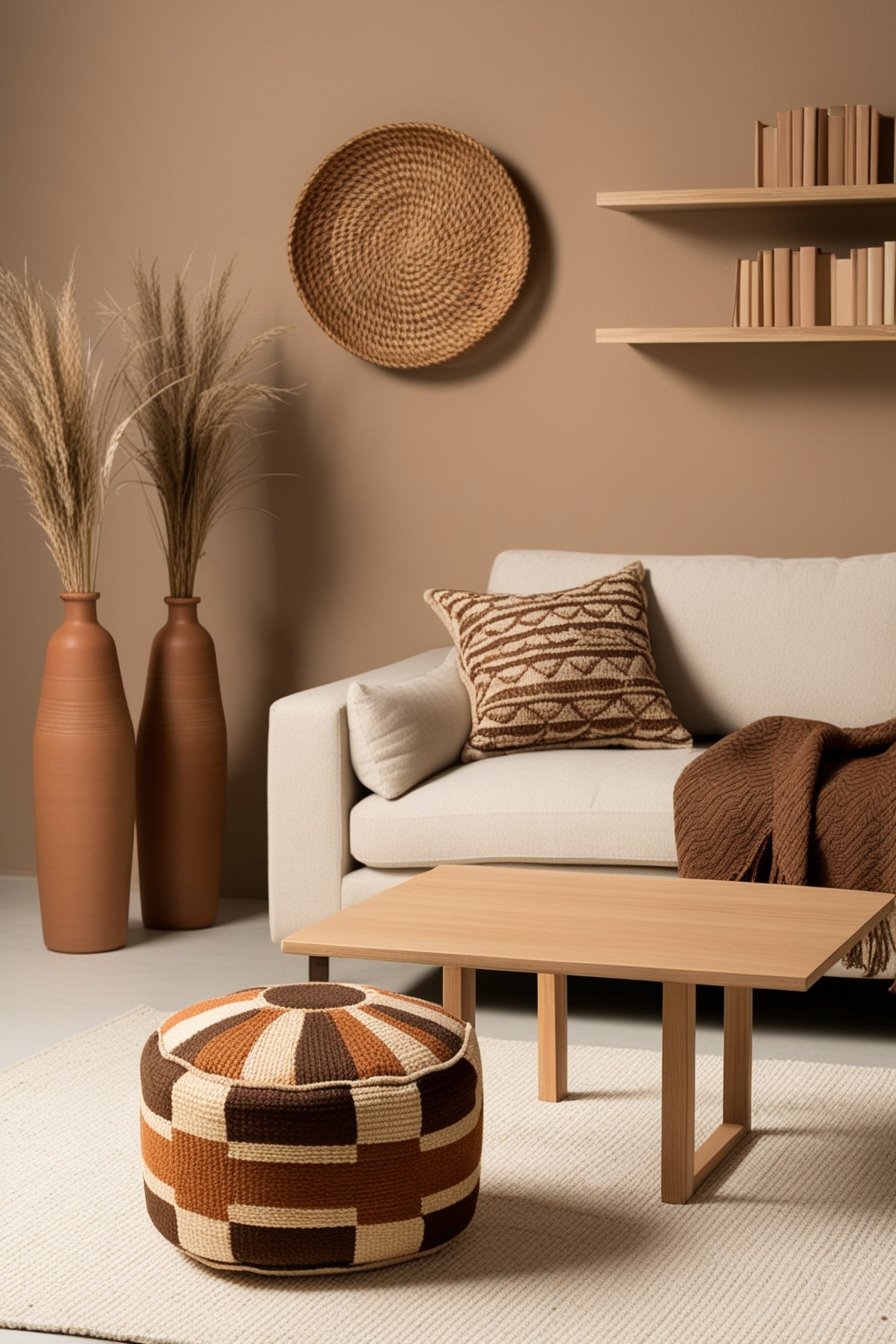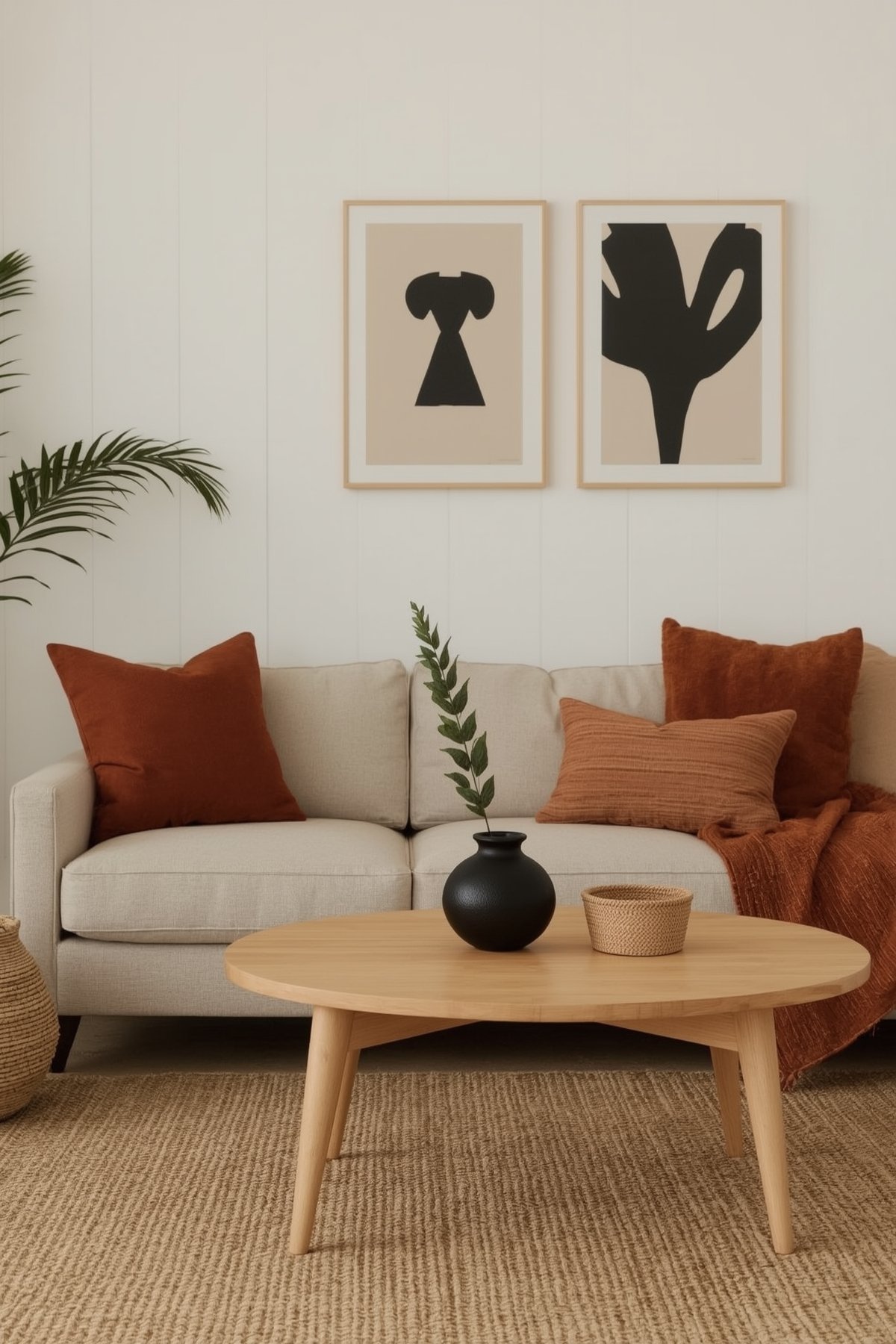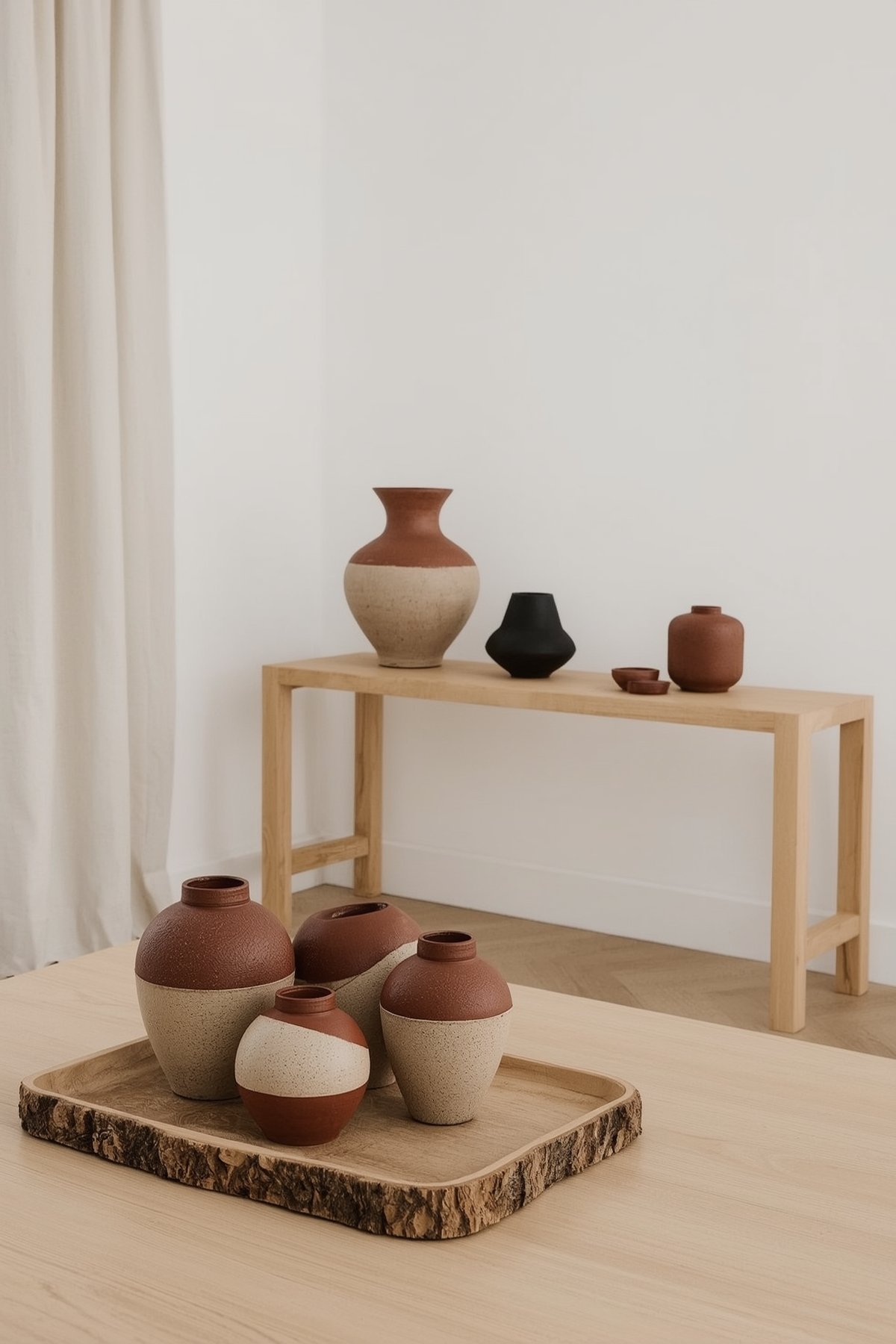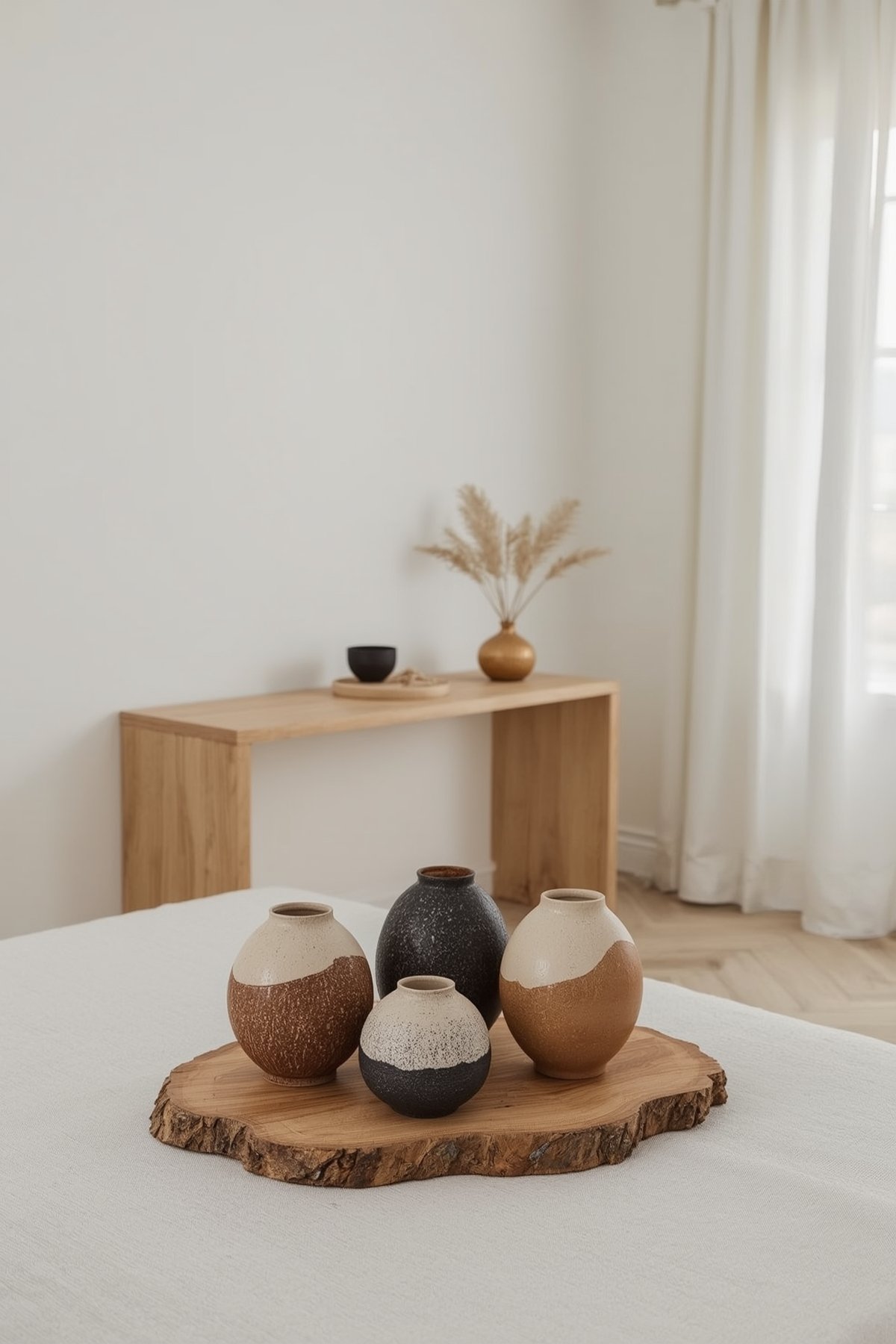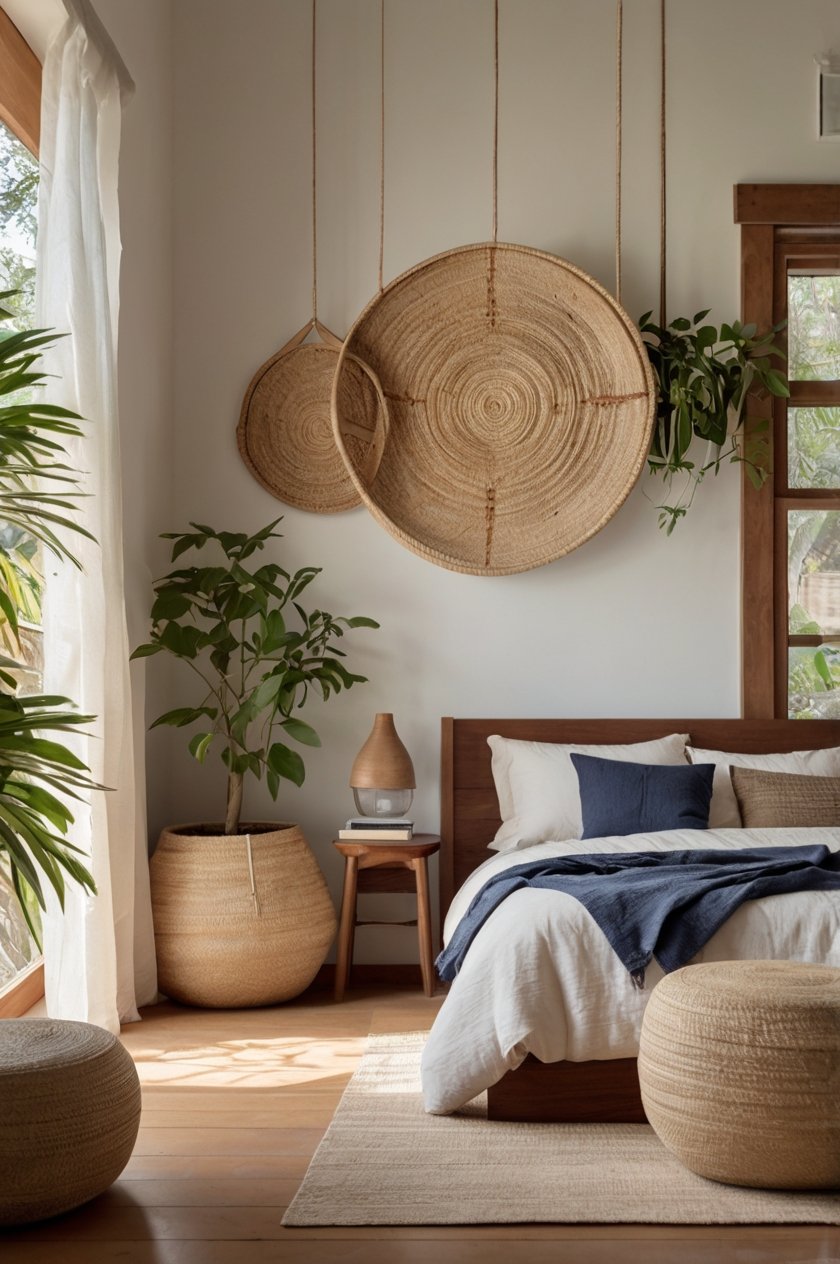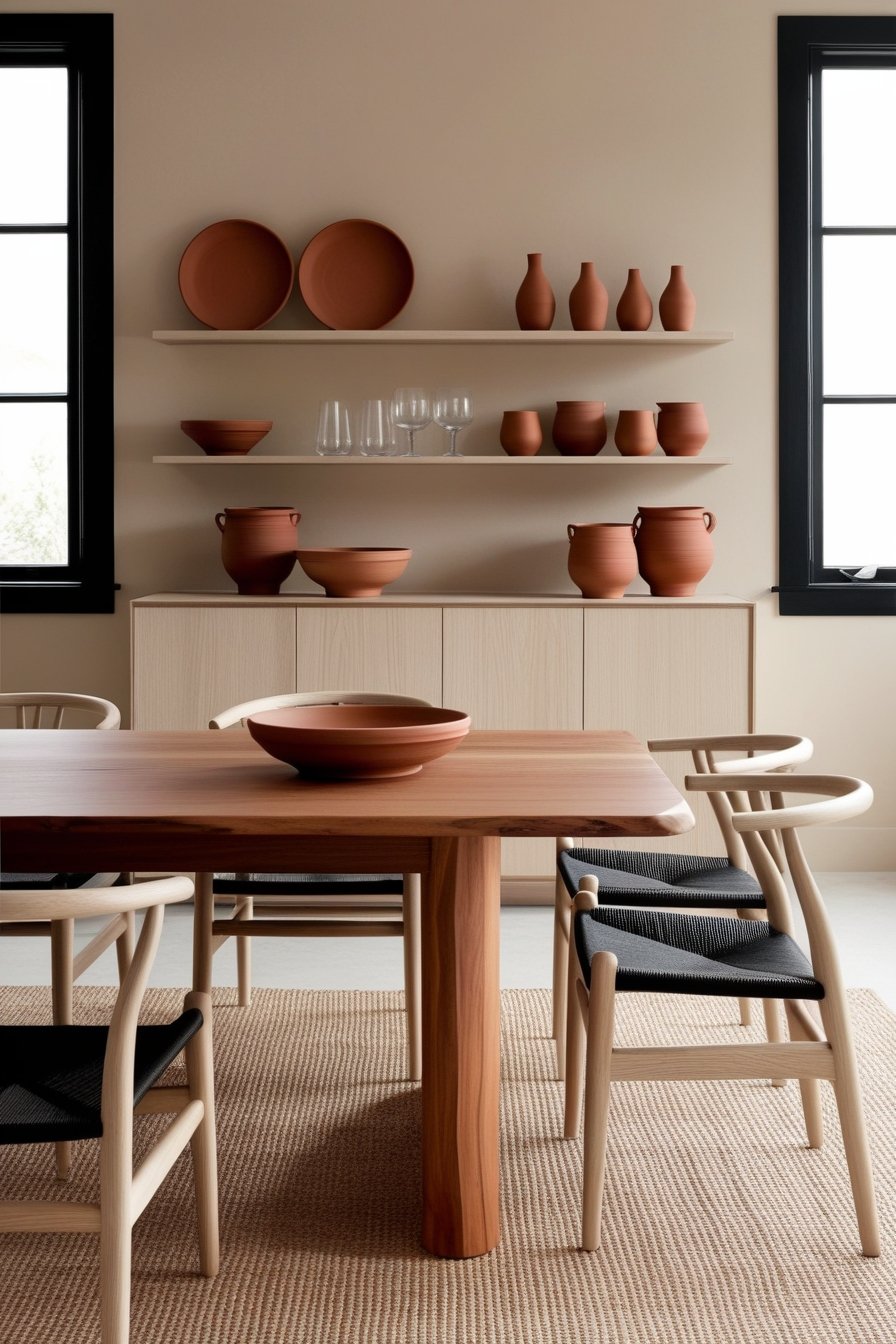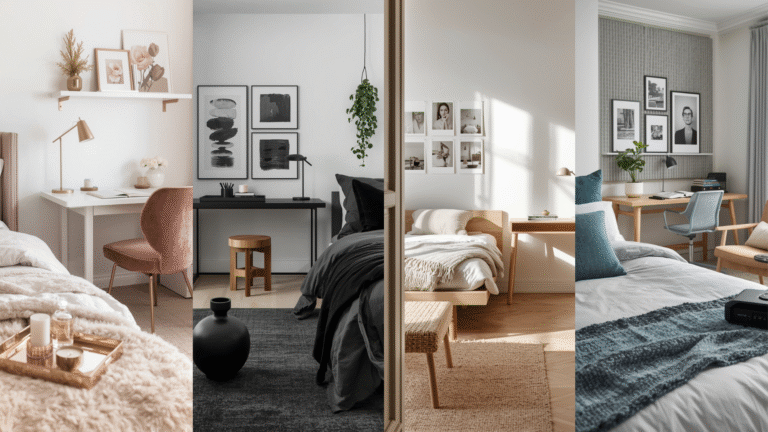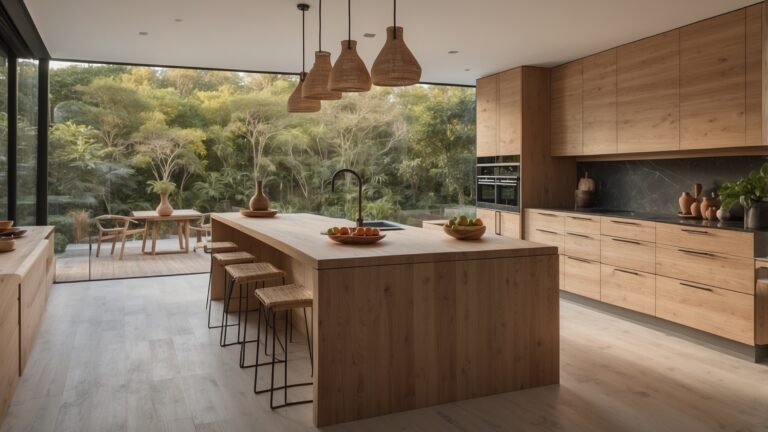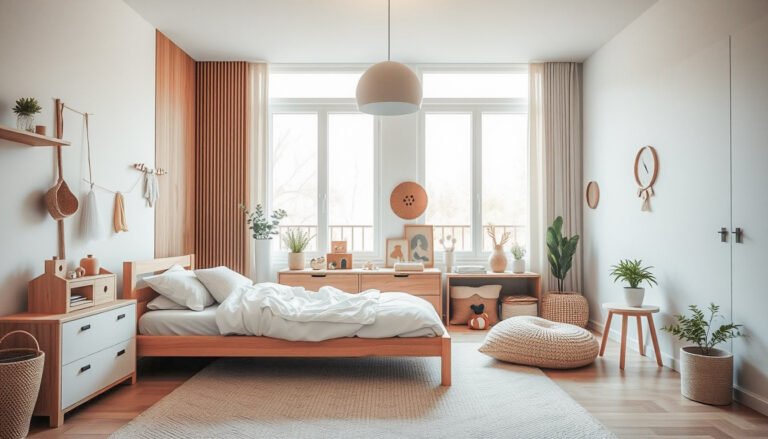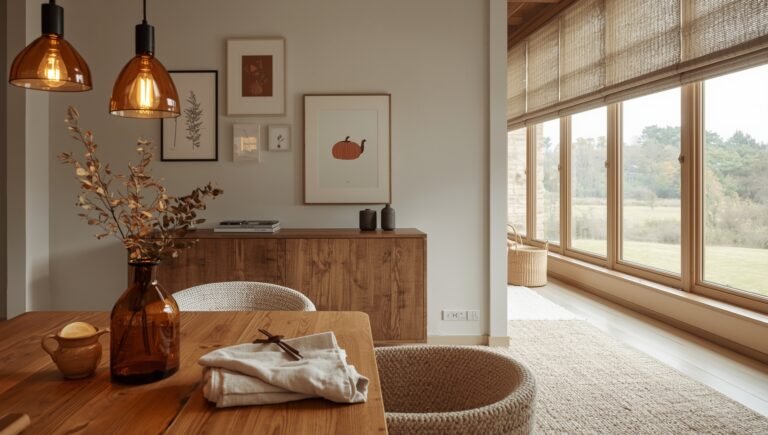Afro Japandi Interior Design: How to Blend Two Cultures into a Stunning Modern Home
Are you tired of cookie-cutter interior design styles that feel like everyone else’s home? I’ve discovered a fresh design approach that might be exactly what you’re looking for. Afro Japandi interior design is the beautiful fusion of African artistic traditions with Japanese minimalism – creating spaces that are both culturally rich and serenely minimal.
As someone who’s been obsessed with home design for years, I fell in love with this style the moment I discovered it. There’s something magical about how Afro Japandi combines seemingly opposite design philosophies into harmonious, balanced interiors that feel both exotic and incredibly peaceful.
Key Takeaways from Afro Japandi Design
Before diving deep into the details, here’s what makes Afro Japandi so special:
- Combines the warmth and vibrancy of African design with Japanese minimalism
- Focuses on natural materials, craftsmanship, and functional beauty
- Creates spaces that feel both culturally rich and calming
- Emphasizes sustainability and respect for natural resources
- Works brilliantly in modern homes seeking character without clutter
What Exactly Is Afro Japandi Interior Design?
Afro Japandi is a relatively new design movement that marries two distinct cultural aesthetics: the vibrant, pattern-rich traditions of African design with the minimalist, nature-focused principles of Japanese interiors.
The Origins of This Unique Fusion
While Japandi (the combination of Japanese and Scandinavian design) has been popular for several years, Afro Japandi takes this concept further by introducing African design elements. This fusion emerged as designers and homeowners sought ways to create more culturally diverse spaces while maintaining the clean, uncluttered feel that makes Japanese design so appealing.
The beauty of Afro Japandi lies in its seemingly contradictory elements: African design is often bold, colorful, and pattern-heavy, while Japanese aesthetics favor simplicity, negative space, and subdued colors. Yet somehow, when thoughtfully combined, these styles complement each other perfectly.
Key Elements of African Design in Afro Japandi
The African influence in Afro Japandi brings warmth, texture, and cultural richness to interiors.
Natural Materials with Cultural Significance
African design celebrates natural materials like wood, clay, stone, and natural fibers. In Afro Japandi spaces, you’ll find these materials used in ways that honor their origins while fitting into a minimal aesthetic.
Hand-carved wooden stools, woven baskets, and clay pottery bring authentic African craftsmanship into the home. I love incorporating pieces that tell a story and have been made with traditional techniques passed down through generations.

Bold Patterns Used with Restraint
Traditional African patterns – from mud cloth (bogolan) to kente cloth designs – appear in Afro Japandi interiors but are used more sparingly than in purely African-inspired spaces. Think of a single mud cloth pillow on a minimal sofa, or framed textile art against a neutral wall.
The key is balance: bold patterns become statement pieces rather than competing elements.
Earth Tones and Occasional Vibrant Accents
The color palette draws heavily from the earth – terracottas, ochres, deep browns, and blacks – colors found abundantly in African art and landscapes. These warm tones soften the sometimes stark feeling of minimalist spaces.
While traditional African interiors might embrace many vibrant colors, Afro Japandi typically limits brighter hues to carefully chosen accent pieces.
Japanese Design Elements in Afro Japandi
The Japanese influence provides the foundation of simplicity and mindfulness that defines Afro Japandi spaces.

Minimalism with Purpose
Japanese design is guided by the principle of “less is more,” focusing on quality over quantity. In Afro Japandi, this translates to curated spaces where each item serves a purpose or brings beauty.
The Japanese concept of “ma” – the appreciation of negative space – helps prevent African elements from overwhelming a room. Instead of filling every corner, Afro Japandi embraces breathing room around statement pieces.
Natural Light and Connection to Nature
Japanese design emphasizes harmony with nature, evident in the importance placed on natural light and organic materials. Afro Japandi spaces typically feature large windows with minimal coverings, indoor plants, and views of outdoor greenery when possible.
This connection to nature complements African design’s similar reverence for natural elements and materials.
Low-Profile Furniture and Horizontal Lines
The Japanese influence appears in furniture choices that favor low profiles, clean lines, and functional simplicity. Think platform beds, low sofas, and coffee tables that encourage a grounded feeling.
These minimal furniture pieces provide the perfect backdrop for more detailed African elements to shine.
My Top Tips for Creating an Afro Japandi Space
After studying this style and implementing it in my own home, I’ve developed some practical approaches that I’m excited to share with you:
Start with a Neutral Base
I always recommend beginning with a neutral foundation – walls in white, cream, taupe, or soft earth tones. This creates the perfect canvas for introducing both African and Japanese elements without the space feeling chaotic.
My personal favorite approach is using textured paint techniques on neutral walls – like a subtle hand-troweled finish – to add depth without color.
Focus on Handcrafted Quality
Both African and Japanese design traditions value craftsmanship and handmade quality. I’ve found that investing in fewer, better pieces rather than many mass-produced items makes all the difference in achieving authentic Afro Japandi style.
Look for items with visible craftsmanship: hand-carved details, imperfect ceramics with character, or textiles with evidence of handwork.
Balance Pattern with Simplicity
When I first started exploring this style, I made the mistake of using too many patterned pieces. Now I know that the magic happens when you pair a statement African textile or artwork with plenty of clean, simple elements.
A good rule of thumb: if you add something with pattern or visual weight, balance it with something minimal nearby.
How to Choose Furniture for Afro Japandi Interiors
Furniture selection is crucial for achieving the right balance in Afro Japandi spaces.
Wood Tones Matter
The types of wood you choose can dramatically affect how well your African and Japanese elements harmonize. I’ve found that mixing wood tones works beautifully in Afro Japandi design – perhaps a darker, richly-grained African hardwood side table paired with lighter Japanese-inspired maple or oak furniture.
Look for woods with visible grain and natural finishes rather than heavily processed or painted pieces.
Embrace Low-Profile Pieces
Japanese influence shines through in furniture that sits closer to the ground. Platform beds, floor cushions, and low-slung seating help create that distinctly Japanese sense of groundedness while providing simple backdrops for African textiles.
I converted my own living room by replacing a bulky sofa with a lower, cleaner-lined option, and the space immediately felt more authentic to the Afro Japandi aesthetic.
Mix Cultural Elements Thoughtfully
Some of my favorite Afro Japandi spaces feature furniture that already blends both influences – like a minimal bench with African-inspired carved details, or a Japanese-style low table made from African hardwood.
When shopping, look for pieces that might bridge both design traditions rather than feeling exclusively tied to one culture.
Textiles and Soft Furnishings in Afro Japandi Design
Textiles provide some of the most accessible ways to bring Afro Japandi style into your home.
African Textiles as Art
Traditional African textiles like mud cloth (bogolan), kente cloth, and indigo-dyed fabrics make stunning statement pieces. Rather than using them extensively, I like to treat these textiles as art – perhaps framing a piece of mud cloth, using a single kente cloth pillow, or displaying a vintage African textile as a wall hanging.
The intricate patterns and rich history of these textiles deserve to be showcased thoughtfully.
Simple Linens with Texture
For bedding, window treatments, and most upholstery, I prefer simple, high-quality natural fibers in neutral tones. Linen, raw cotton, and hemp provide beautiful texture without competing with statement pieces.
The Japanese influence comes through in these simpler textiles – think wabi-sabi linen with its beautiful imperfections and natural wrinkles.
Layering with Intention
Afro Japandi interiors often feature thoughtful layering – a simple linen sofa with carefully selected African-inspired throw pillows, or a minimal bed with a mud cloth throw at the foot. The key is restraint; each layer should add purpose and beauty.
Color Palettes for Afro Japandi Homes
Creating the right color balance is essential for successful Afro Japandi spaces.

Earth-Centered Foundation
The most successful Afro Japandi interiors I’ve seen build from a foundation of earth tones – warm browns, terracottas, ochres, and blacks derived from natural materials. These colors appear in both African and Japanese traditional design, creating a natural bridge between the styles.
I like to keep walls neutral but warm – soft whites, gentle creams, or light earth tones provide the perfect backdrop.
Strategic Color Moments
While the base palette remains fairly neutral, Afro Japandi welcomes moments of more vibrant color when used intentionally. A single cobalt blue ceramic piece, or a textile with touches of bright orange can become a focal point without overwhelming the serene quality of the space.
Black as an Anchoring Element
Both African and Japanese designs frequently incorporate black as an anchoring element. In Afro Japandi spaces, black appears in accents like picture frames, furniture details, or small decorative objects, helping to ground the design and provide visual punctuation.
Accessories and Décor for Afro Japandi Spaces
The accessories you choose will truly define your Afro Japandi interior.
Meaningful Objects Over Clutter
Both African and Japanese design traditions value objects with meaning and purpose. In my Afro Japandi spaces, I focus on curating fewer, more significant items rather than many small decorative pieces.
Each object should either serve a purpose or hold special cultural or personal significance.
Natural Elements as Décor
Plants, stones, wood, and other natural elements make perfect accessories for Afro Japandi interiors. Consider sculptural indoor plants like snake plants or fiddle leaf figs, river stones as paperweights, or driftwood as natural sculpture.
Artisanal Ceramics and Vessels
Handmade ceramics bridge African and Japanese aesthetics beautifully. Look for pieces with evidence of the maker’s hand – slight imperfections, visible technique, and organic shapes.
I love contrasting smooth Japanese-inspired stoneware with more textured African-inspired ceramic pieces for visual interest.
Creating Different Afro Japandi Rooms
Let’s explore how Afro Japandi principles can be applied throughout the home.
Afro Japandi Living Rooms
The living room offers perhaps the easiest space to implement Afro Japandi style. Start with a minimal, comfortable seating arrangement – low-profile sofas or chairs in natural fabrics. Add a simple wood coffee table, perhaps with subtle carved details that nod to African craftsmanship.

For the walls, consider a statement piece of African textile art or a large-scale black and white photograph of African landscapes, balanced by plenty of negative space. Complete the look with a few carefully chosen accessories – a handmade ceramic vessel, a sculptural plant, and perhaps one or two patterned cushions.
Afro Japandi Bedrooms
In the bedroom, the Afro Japandi approach creates incredibly peaceful sleeping spaces. I recommend starting with a platform bed or low frame in simple wood. Dress it with high-quality, minimally patterned linens in natural fibers and earth tones.
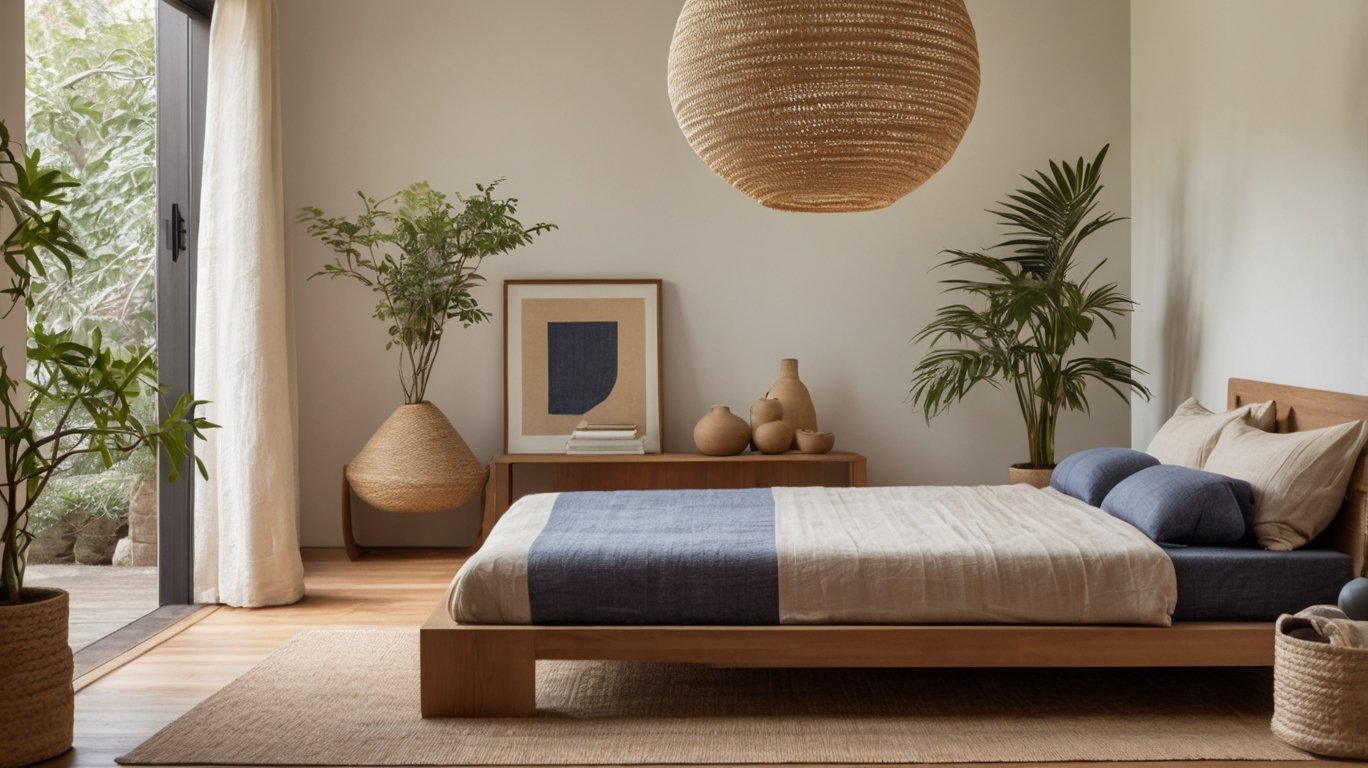
Add visual interest with a mud cloth throw at the foot of the bed or a single statement pillow. Keep bedside tables minimal, perhaps featuring a handmade ceramic lamp or vessel. If space allows, a low bench with African-inspired carved details makes a beautiful addition at the foot of the bed.
Afro Japandi Kitchens and Dining Areas
Kitchens benefit from the functional simplicity of Japanese design combined with the warmth of African elements. Open shelving displaying a curated collection of handmade ceramics – some with Japanese-inspired simplicity, others with African-inspired textures – creates visual interest without clutter.
For dining areas, a simple wood table paired with clean-lined chairs provides the foundation. Add interest with a textured table runner, handmade ceramic serving pieces, and perhaps a statement pendant light with African-inspired details.

Sustainable Aspects of Afro Japandi Design
One of the most appealing aspects of Afro Japandi design is its inherent sustainability.
Quality Over Quantity
Both African and Japanese design traditions value longevity and quality craftsmanship. By investing in fewer, better pieces designed to last generations, Afro Japandi interiors naturally reduce consumption and waste.
Natural, Renewable Materials
The style’s emphasis on natural materials like wood, clay, plant fibers, and stone encourages the use of renewable resources. Look for sustainably harvested woods, natural fibers grown without pesticides, and items made from renewable resources.
Supporting Artisans and Traditional Crafts
By purchasing handmade items directly from artisans or fair trade organizations, you’re not only getting more authentic pieces but also supporting traditional craftsmanship and providing sustainable livelihoods.
Common Mistakes to Avoid in Afro Japandi Design
Through my own trial and error, I’ve identified several pitfalls to watch for when creating Afro Japandi spaces.
Overdoing African Patterns
The most common mistake I see is using too many patterns or bold elements, which can overwhelm the serene Japanese aspects of the style. Remember that in Afro Japandi, African patterns and bold elements should be statement pieces, not the dominant visual.
Creating Museum-Like Spaces
Another misstep is creating spaces that feel like cultural museums rather than lived-in homes. Authentic Afro Japandi interiors incorporate elements from both traditions in ways that feel organic and personal, not like cultural exhibitions.
Forgetting Functionality
Both African and Japanese design traditions highly value function. Avoid choosing items purely for their aesthetic appeal without considering their purpose or practicality in your daily life.
The Bottom Line on Afro Japandi Style
Afro Japandi design offers a beautiful way to create spaces that feel both culturally rich and serenely minimal. By thoughtfully combining elements from African and Japanese design traditions, you can create interiors that tell cultural stories while maintaining the peace and simplicity that makes a house truly feel like home.
What I love most about this style is its adaptability – you can lean more toward African elements if you prefer more warmth and pattern, or emphasize Japanese minimalism if you crave more simplicity and negative space. The key is finding your personal balance between these two beautiful design traditions.
Frequently Asked Questions about Afro Japandi Design
Is Afro Japandi expensive to implement?
While handcrafted items can be investment pieces, Afro Japandi actually encourages owning fewer, better things rather than constantly redecorating. You can begin with simple changes – a meaningful African textile as wall art, or reorganizing your space to embrace more negative space – before investing in larger furniture pieces.
Does Afro Japandi work in small spaces?
Absolutely! The Japanese influence, with its emphasis on functionality and minimalism, makes Afro Japandi perfect for smaller homes. The key is being even more selective about your statement pieces and embracing multifunctional furniture.
How can I incorporate Afro Japandi if I already have furniture?
Start by editing what you already own, keeping pieces that align with the clean lines of Japanese design or the warmth of African aesthetics. Then, incorporate smaller elements like textiles, art, and accessories that reflect both traditions. Often, simply removing excess décor and creating more negative space can begin the transformation.
Is it culturally appropriate to mix these styles if I’m not from either culture?
When approached with respect and appreciation rather than appropriation, combining elements from different cultures can be a beautiful way to honor them. Focus on purchasing authentic pieces directly from artisans or fair trade organizations, learn about the cultural significance of patterns and objects, and avoid using sacred or ceremonial items as mere décor.
How do I find authentic African and Japanese pieces?
Look for fair trade organizations, artisan marketplaces (both online and in person), and specialty stores that focus on ethically sourced global goods. When possible, learn about the artisans and the specific regions and traditions behind the pieces you purchase.

ABOUT the AUTHOR
TOKI; INTERIOR DESIGN & lifestyle CONTENT CREATOR.
Hey there! I’m Toki—the design-obsessed brain behind Dwell Studio 24. I’m a content creator passionate about interior design, photography, and creativity, living in a 77-year-old house with my husband and our awesome three kids. I write about interior design, furniture, home topics, and my lifestyle, including travel, recipes, skincare, and daily routines. I hope to inspire your next project and lifestyle!
ABOUT the AUTHOR
TOKI; INTERIOR DESIGN & lifestyle CONTENT CREATOR.

Hey there! I’m Toki—the design-obsessed brain behind Dwell Studio 24. I’m a content creator passionate about interior design, photography, and creativity, living in a 77-year-old house with my husband and our awesome three kids. I write about interior design, furniture, home topics, and my lifestyle, including travel, recipes, skincare, and daily routines. I hope to inspire your next project and lifestyle!
ABOUT the AUTHOR
TOKI; INTERIOR DESIGN & lifestyle CONTENT CREATOR.

Hey there! I’m Toki—the design-obsessed brain behind Dwell Studio 24. I write about interior design, furniture, home topics, and my lifestyle, including travel, recipes, skincare, and daily routines. I hope to inspire your next project and lifestyle!




